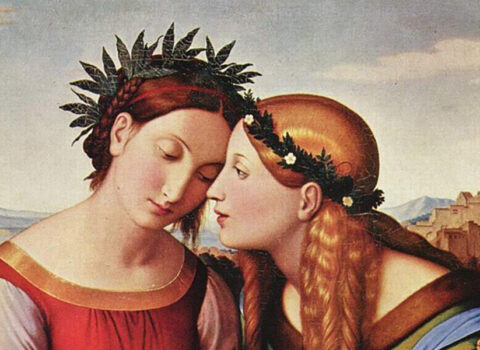
Female scientists and intellectuals, religious women
A journey through the latest bibliographic offerings of the Annali.Recensioni.Online
Stories about science, politics, the environment, religion: there is something for everyone in the new issue of ARO. Annali.Recensioni.Online, the digital journal of the Italian-German Historical Institute, aimed at hosting bibliographical reports of interest to both the specialist public and the more curious audience, has been recently published. Unlike previous issues, the latest one opens with a space – which we call Forum – dedicated to no less than two studies focusing on religion and social history in the modern age: Sacre metamorfosi. Racconti di conversione tra Roma e il mondo in età moderna (Viella, 2022) and Catholic Spectacle and Rome’s Jews. Early Modern Conversion and Resistance (Princeton University Press, 2022).
The former, collects and analyzes sixty conversion stories written in the early modern age, organized, as the title already suggests, in a way that divides the subjects according to type (e.g., Chiara Petrolini edits the edition that groups impostors, young or very young, learned visionaries and interpreters). The reviewer for this volume is Maria Teresa Fattori, who highlights – among other things – the importance of contextualizing conversions within the framework of political and missionary relations of the time. Also the second book, written by Emily Michelson and reviewed by Umberto Cecchinato revolves around power and conversions. In Catholic Spectacle and Rome’s Jews, the author meticulously explores the practice of Jewish conversion sermons in Rome during a long historical period. From the sixteenth century, in fact, for nearly three hundred years, Jews were forced to listen to these sermons every Saturday, suffering humiliation and pressure to convert to the Christian faith. A strategy, the one highlighted by Michelson, adopted by the Catholic Church to reassert its power and authority after the Protestant Reformation.
The five sections that follow the Forum do not fail to point out as many interesting volumes. First of all, strongly suggested by the writer, After the Flood by Lydia Barnett, among whose pages stands out the curious story of a Paduan “apothecary” named Camilla Erculiani. Likewise, again for those who are passionate about the history of science combined with gender history, further on are the biographies of two women protagonists of Italian scientific culture in the early 19th century: botanist Elisabetta Fiorini Mazzanti (1799-1879) and astronomer Caterina Scarpellini (1808-1873). Both recounted by Federica Favino in Donne e scienza nella Roma dell’Ottocento (Women and Science in Nineteenth-Century Rome) and highlighted by the beautiful pen of Maria Conforti.
Among those reviewed in this issue, Barnett’s text is not the only one to ride the wave of the (not too) recent Environmental History. he topic addressed by the American historian is similar in the collection of essays “Il fuoco e l’acqua” (Fire and Water), presented by Niccolò Caramel, in which women and men of medieval and modern times are described as conscious actors, in constant interaction with the surrounding world exploited to their advantage. ————– Beings capable of generating changes in the order of nature, Caramel writes, so much so that they contribute to the onset of disastrous events. In short, a thematic framework, that relating to environmental history, which in this month’s proposals is completed with the presence of two other books: Il paesaggio agrario italiano (The Italian Agrarian Landscape, ed), reviewed by Roberto Leggero, and Mount Sacred, suggested by Paolo Costa and written by Jon Mathieu, a veteran of a purely alpine Environmental History.
At the end of this first 2024 collection, particularly curious readers will come across a women’s biography entitled L’infiltrata. (The Infiltrator). The author of the story of Emma Mezzomonti (1903-1969), a woman of considerable intellectual depth in Italian culture and publishing, is Massimo Mastrogregori, whose reconstruction does not seem to entirely convince Albertina Vittoria, a reviewer of the text.
In short, without revealing further plots, anyone who decides to browse through the new ARO will navigate a boundless spacetime of stories, but also among theoretical, methodological and teaching issues. Bon voyage!



